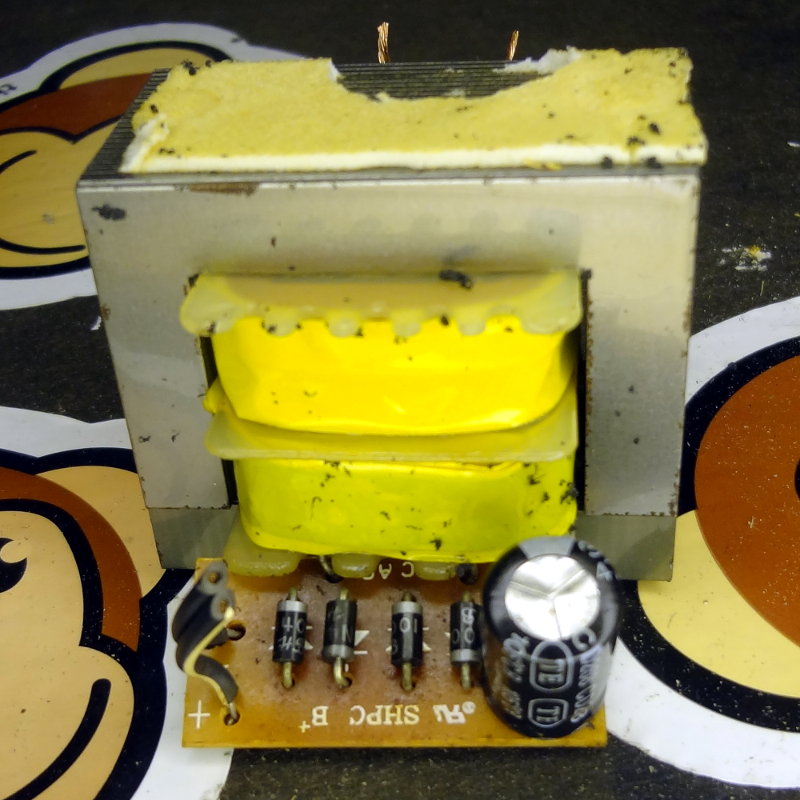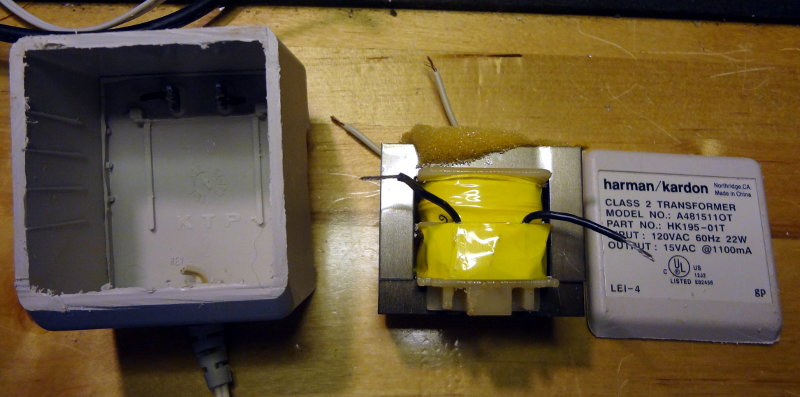The final wall wart dissection (for now) is a dead charger for the battery of a 14V cordless drill. Rated at 18VDC out, this one is just a wall wart that plugs directly into the battery.
Like the previous wall wart, it consists of a large transformer with a simple full wave rectifier circuit. The rectifier circuit on this wall wart is attached right at the secondary of the transformer and adds a capacitor across the rectifier output to smooth out the ripple from the rectifier.
With this one, there appeared to be no continuity on either the primary or secondary side which certainly explains the 0V my DMM was giving me at the plug.


